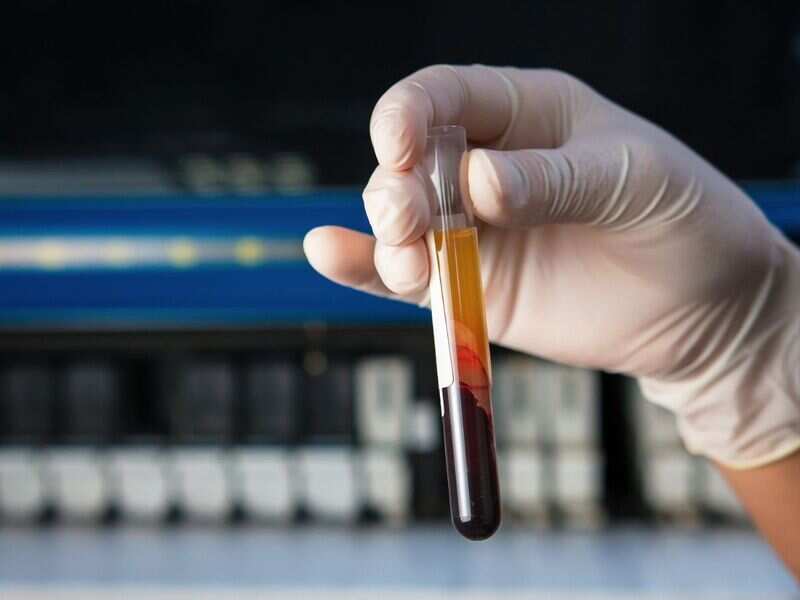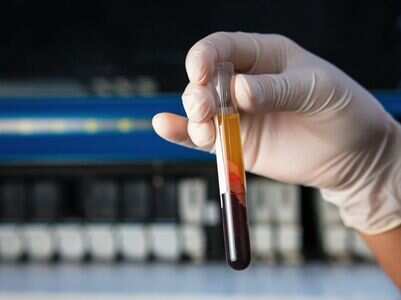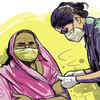What is Multiple Myeloma? Causes, symptoms and everything you need to know
Kirron Kher ‘on way to recovery’ from blood cancer: Anupam Kher
What goes into prioritising wellness? Gaur Gopal Das, Malaika Arora and others share their secrets
My COVID Story 2021: It was a mix of physical and mental trauma for me
Divij Bajaj Makes It to India's Top 30 Under 30 List
What is Multiple Myeloma? Causes, symptoms and everything you need to know
What is Multiple Myeloma? Causes, symptoms and everything you need to know

Multiple Myeloma is a type of blood cancer that impacts the plasma cells. Cancer is the uncontrollable growth of cells which then spreads to the surrounding tissues. Multiple myeloma or Kahler’s disease is a cancer of plasma cells, which are the white blood cells found in the bone marrow. These are responsible for producing antibodies that protect your body from fighting off various infections and diseases.
When the plasma cells develop and multiply on an abnormal rate inside the bone marrow, it leads to the production of too much protein called immunoglobulin into your bones and blood, which in turn leads to multiple myeloma. When left undiagnosed and untreated, multiple myeloma then spreads to different parts of the body, causing multiple organ damage.
Other types of plasma cell disorders
Multiple myeloma is not the only condition associated with plasma cells. Here are other types of plasma cells disorder.
- Monoclonal gammopathy of uncertain significance (MGUS) - Monoclonal gammopathy is when your plasma cells produce multiple copies of one antibody. Multiple myeloma is a condition associated with this disorder.
- Solitary plasmacytoma - Akin to multiple myeloma, solitary plasmacytoma is also associated with abnormal plasma cell growth. However, this condition causes a single unusual plasma cell growth rather than many of them. This can occur both inside and outside the bone.
- Light chain amyloidosis - The occurrence of abnormal plasma cell growth within the bone marrow is called light chain amyloidosis. However, contrary to multiple myeloma, there are just a few of them.
- Waldenstrom macroglobulinemia - Waldenstrom macroglobulinemia is a combination of monoclonal gammopathy and non-Hodgkin’s lymphoma, which is a condition associated with the lymph system.
Multiple Myeloma: Symptoms
The symptoms of multiple myeloma may vary from person to person. While the associated symptoms may not arise initially, as the disease progresses or worsens, there will be certain indicators to watch out for. Here are some of the symptoms you may experience if you're suffering from multiple myeloma.
- Bone damage
- Anemia
- Weakness and fatigue
- Weight loss -
- Loss of appetite and nausea
- Renal failure- Confusion
Causes of Multiple Myeloma
While the cause of multiple myeloma is still unknown, it occurs due to the abnormal growth of plasma cells in the bone marrow, which spreads to other parts of the body. The myeloma cells do not follow a normal life cycle, instead it goes on the divide indefinitely, which makes it extremely dangerous.
Risk factors
The cause of multiple myeloma is not yet known. However, people have a higher risk of developing this condition if they fall under the categories listed below.
- People who are older than 65
- If you're a male
- People who are of African-American descent
- Overweight and obese
- People who have been exposed to radiation
- People who have been exposed to harmful chemicals
Diagnosis
Considering you develop ailments such as a low blood count, hypercalcemia or renal problems, which are also symptoms of multiple myeloma, your doctor may ask you to get yourself tested. To confirm a diagnosis for multiple myeloma, you can undergo various tests.
A blood or a urine test is the most common medium of diagnosing multiple myeloma. It helps measure the different kinds of cells in your blood and also checks on how well your kidneys are functioning.
Apart from that, imaging tests which include, X-rays, MRI scans or CT scans can be used to identify any indicators of multiple myeloma. Your doctor can also recommend a biopsy, where a sample of your bone marrow can be extracted and examined to confirm the status of the condition.
Treatment
While there is no cure for multiple myeloma, treatments are available to reduce the pain, complications and to curb further progression of the disease. Given that you have no symptoms, your doctor may choose to observe you rather than start the treatment. However, if your stage of multiple myeloma is advanced, here are some of the treatment options you can choose from.
- Targeted therapy - The medications used in this treatment targets the proteins, genes and tissues responsible for the growth of the cancerous cells.
- Biological therapy - In this case, the medications used trigger your body’s immune system to attack myeloma cells. Some of the medications used in this process are lenalidomide (Revlimid), thalidomide (Thalomid) or pomalidomide (Pomalyst).
- Chemotherapy - Unlike other treatments, chemotherapy is used in more advanced cases. The medications used are aggressive, and that can help in eliminating cells that multiply quickly. Chemotherapy drugs are often given in high doses, especially before a stem cell transplant.
- Corticosteroids - These medications help other treatments to work better and more efficiently. If you're going through a chemo, your doctor might prescribe dexamethasone or prednisone to help with side effects.
- Radiation therapy - Radiation therapy is another way to damage myeloma cells and curb their growth. With the help of strong beams of energy, it can kill a cluster of abnormal plasma cells.
- Stem cell transplant - In a stem cell transplant, healthy stem cells will be removed from your body or will be extracted from a healthy donor, which will then be stored. While undergoing a chemotherapy, all the cells in your bone marrow, including the disease-causing abnormal plasma cell, will be destroyed. Once the procedure is completed, the doctor will place the stored healthy stem cells back into your bloodstream through a tube called a catheter. These healthy cells will start producing healthy blood and will refresh all the blood cells.
Post-therapy measures
Once you have been treated for multiple myeloma, it is important that you take care of yourself.
Engage in regular physical activity, but do not strain yourself. Get plenty of rest and do not stress yourself as it will only worsen your condition.
Eat a healthy diet and choose the right foods. This will help you heal faster and more efficiently.
When the plasma cells develop and multiply on an abnormal rate inside the bone marrow, it leads to the production of too much protein called immunoglobulin into your bones and blood, which in turn leads to multiple myeloma. When left undiagnosed and untreated, multiple myeloma then spreads to different parts of the body, causing multiple organ damage.
Other types of plasma cell disorders
Multiple myeloma is not the only condition associated with plasma cells. Here are other types of plasma cells disorder.
- Monoclonal gammopathy of uncertain significance (MGUS) - Monoclonal gammopathy is when your plasma cells produce multiple copies of one antibody. Multiple myeloma is a condition associated with this disorder.
- Solitary plasmacytoma - Akin to multiple myeloma, solitary plasmacytoma is also associated with abnormal plasma cell growth. However, this condition causes a single unusual plasma cell growth rather than many of them. This can occur both inside and outside the bone.
- Light chain amyloidosis - The occurrence of abnormal plasma cell growth within the bone marrow is called light chain amyloidosis. However, contrary to multiple myeloma, there are just a few of them.
- Waldenstrom macroglobulinemia - Waldenstrom macroglobulinemia is a combination of monoclonal gammopathy and non-Hodgkin’s lymphoma, which is a condition associated with the lymph system.
Multiple Myeloma: Symptoms
The symptoms of multiple myeloma may vary from person to person. While the associated symptoms may not arise initially, as the disease progresses or worsens, there will be certain indicators to watch out for. Here are some of the symptoms you may experience if you're suffering from multiple myeloma.
- Bone damage
- Anemia
- Weakness and fatigue
- Weight loss -
- Loss of appetite and nausea
- Renal failure- Confusion
Causes of Multiple Myeloma
While the cause of multiple myeloma is still unknown, it occurs due to the abnormal growth of plasma cells in the bone marrow, which spreads to other parts of the body. The myeloma cells do not follow a normal life cycle, instead it goes on the divide indefinitely, which makes it extremely dangerous.
Risk factors
The cause of multiple myeloma is not yet known. However, people have a higher risk of developing this condition if they fall under the categories listed below.
- People who are older than 65
- If you're a male
- People who are of African-American descent
- Overweight and obese
- People who have been exposed to radiation
- People who have been exposed to harmful chemicals
Diagnosis
Considering you develop ailments such as a low blood count, hypercalcemia or renal problems, which are also symptoms of multiple myeloma, your doctor may ask you to get yourself tested. To confirm a diagnosis for multiple myeloma, you can undergo various tests.
A blood or a urine test is the most common medium of diagnosing multiple myeloma. It helps measure the different kinds of cells in your blood and also checks on how well your kidneys are functioning.
Apart from that, imaging tests which include, X-rays, MRI scans or CT scans can be used to identify any indicators of multiple myeloma. Your doctor can also recommend a biopsy, where a sample of your bone marrow can be extracted and examined to confirm the status of the condition.
Treatment
While there is no cure for multiple myeloma, treatments are available to reduce the pain, complications and to curb further progression of the disease. Given that you have no symptoms, your doctor may choose to observe you rather than start the treatment. However, if your stage of multiple myeloma is advanced, here are some of the treatment options you can choose from.
- Targeted therapy - The medications used in this treatment targets the proteins, genes and tissues responsible for the growth of the cancerous cells.
- Biological therapy - In this case, the medications used trigger your body’s immune system to attack myeloma cells. Some of the medications used in this process are lenalidomide (Revlimid), thalidomide (Thalomid) or pomalidomide (Pomalyst).
- Chemotherapy - Unlike other treatments, chemotherapy is used in more advanced cases. The medications used are aggressive, and that can help in eliminating cells that multiply quickly. Chemotherapy drugs are often given in high doses, especially before a stem cell transplant.
- Corticosteroids - These medications help other treatments to work better and more efficiently. If you're going through a chemo, your doctor might prescribe dexamethasone or prednisone to help with side effects.
- Radiation therapy - Radiation therapy is another way to damage myeloma cells and curb their growth. With the help of strong beams of energy, it can kill a cluster of abnormal plasma cells.
- Stem cell transplant - In a stem cell transplant, healthy stem cells will be removed from your body or will be extracted from a healthy donor, which will then be stored. While undergoing a chemotherapy, all the cells in your bone marrow, including the disease-causing abnormal plasma cell, will be destroyed. Once the procedure is completed, the doctor will place the stored healthy stem cells back into your bloodstream through a tube called a catheter. These healthy cells will start producing healthy blood and will refresh all the blood cells.
Post-therapy measures
Once you have been treated for multiple myeloma, it is important that you take care of yourself.
Engage in regular physical activity, but do not strain yourself. Get plenty of rest and do not stress yourself as it will only worsen your condition.
Eat a healthy diet and choose the right foods. This will help you heal faster and more efficiently.
End of the article
Comments (0)
Featured in Health & Fitness

How your body weight affects sex drive?

“Doctor, can I get shot? I have frozen shoulder”

Risk factors associated with COVID-19 infection

Weight loss: "I finish my dinner by 7.30 pm"

Signs your parents have hypertension

Best ways to have jeera water for weight loss

Signs you need to see a therapist

What is Multiple Myeloma? What you need to know

Difference between new and old COVID strain
LATEST VIDEOS
Health-Fitness
 #Lifelineseries Toxic Positivity: What is it and how it affects us?07:19
#Lifelineseries Toxic Positivity: What is it and how it affects us?07:19 Not hydrating00:10
Not hydrating00:10 5 Healthy habits for optimum work-life balance in entrepreneurs00:35
5 Healthy habits for optimum work-life balance in entrepreneurs00:35 Yoga flow to increase lung capacity 03:59
Yoga flow to increase lung capacity 03:59 Common causes of high libido02:53
Common causes of high libido02:53 Health benefits of drinking water from copper ware00:36
Health benefits of drinking water from copper ware00:36 #LifelineSeries: How to stop procrastinating?04:16
#LifelineSeries: How to stop procrastinating?04:16 5 reasons why alcohol will destroy your muscle gains02:52
5 reasons why alcohol will destroy your muscle gains02:52 These are the easiest ways to keep off belly fat01:17
These are the easiest ways to keep off belly fat01:17 Best exercises for busy working professionals03:35
Best exercises for busy working professionals03:35
StoriesSEE All

























































































![[New!] Level 4 - 30 minute tempo fat-burning!
[New!] Level 4 - 30 minute tempo fat-burning!](https://static.toiimg.com/thumb/79327298.cms?width=147&height=86)
















closecomments
SIGN IN WITH
FacebookGoogleEmail